Must-Visit Museums in Turkey
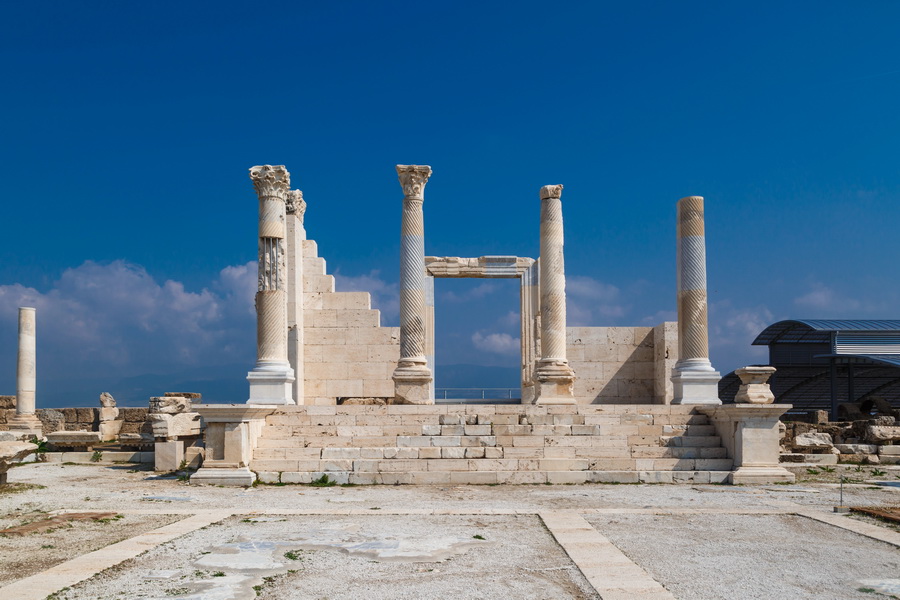
Turkey (Türkiye) museums are a voyage to wonder. From Istanbul’s grand palaces to Cappadocia’s mysterious sensations, these spaces hold the soul of ancient civilisations and the pulse of modern artistry.
From the cobblestone streets of Istanbul to the sunlit ruins of Ephesus, Turkish museums are marvels of both craft and curation. Here, you will encounter Byzantine mosaics, Ottoman textiles, and Hittite relics. Take, for example, the Topkapı Palace (Topkapı Sarayı), perched like a jewel overlooking the Bosphorus, where sultans once walked and treasures gleamed under the soft glow of chandeliered galleries. Additionally, consider the Museum of Anatolian Civilisations (Anadolu Medeniyetleri Müzesi) in Ankara, a temple of time showcasing everything from Palaeolithic artefacts to the splendour of the Phrygian kings.
The best time to visit Turkish museums is in spring, from March to May, when the weather is pleasant for an exquisite open-air adventure and less crowded for refined traveller encounters.
For an effortless experience, Turkey’s Ministry of Culture and Tourism provides Museum Pass with passage to top heritage centres across the country, saving you time and money while letting you explore the country’s colourful past.
Must-visit Museums in the Marmara and Thrace Region
The Marmara and (formerly) Thrace regions are home to some of the best museums in Turkey, each preserving history within their venerable walls.
Must-See Museums in Istanbul
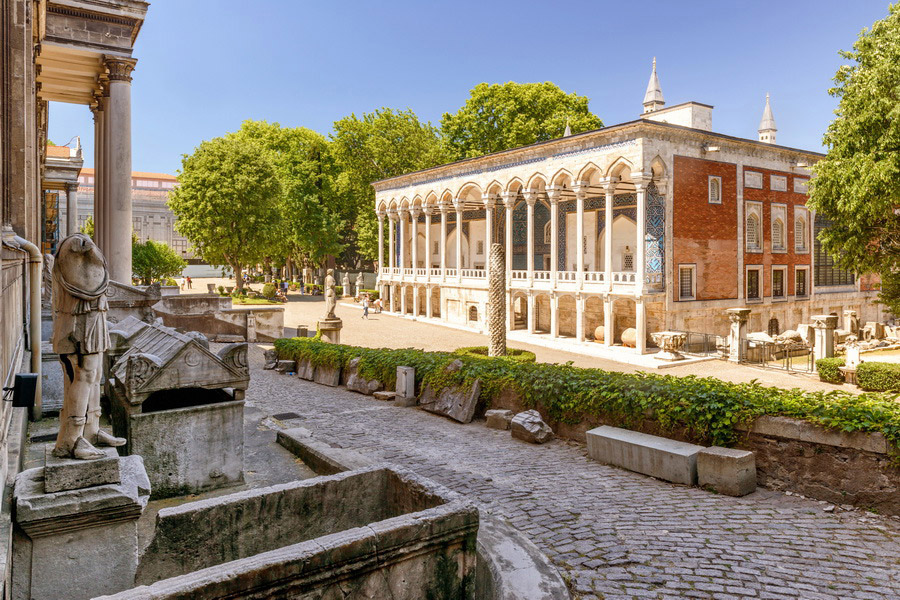
Istanbul unfolds the city's Byzantine, Sublime Porte (Bâb-ı Âli), and contemporary periods, spotlighting treasures that bridge centuries of culture, art, and innovation.
Byzantine Period (330–1453)
The Galata Tower (Galata Kulesi) stands as a formidable remnant of the Byzantine period, originally constructed in 1348 during the reign of the Genoese colony. Perched atop the Galata district with breathtaking panoramic views of Istanbul's historic peninsula, its interior shelters the Galata Tower Museum (Galata Kulesi Müzesi), showcasing exhibits on the tower's role in defensive architecture and its transformation through the ages.
The Chora Museum (Kariye Muzesi) features exquisite frescoes and mosaics narrating Christian themes in a uniquely intimate setting. You need about 1-1.5 hours for an up-close view of this artistry.
Ottoman Empire Period (1299–1922)
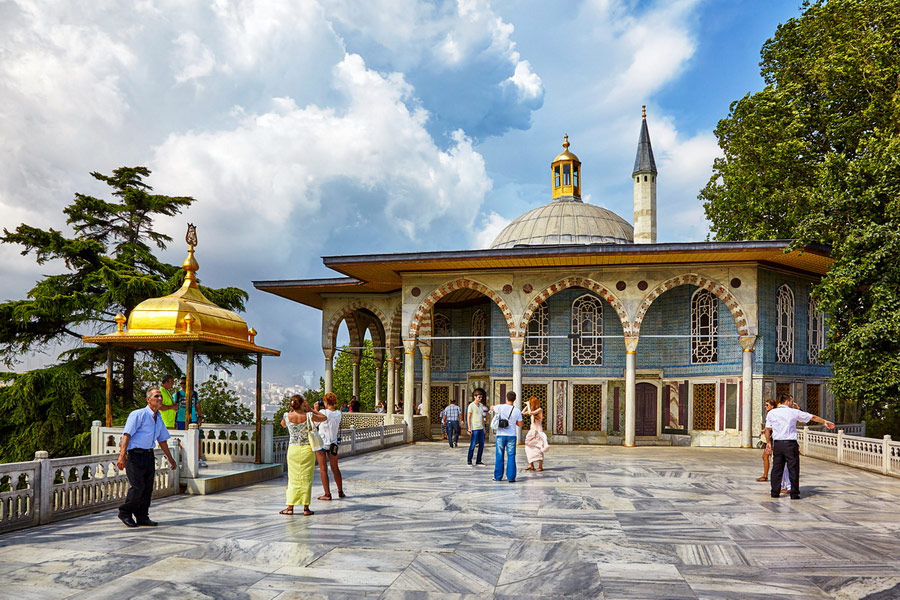
The Topkapı Palace was the residence of sultans and an administrative centre. It has courtyards, collections, and exhibits related to Ottomans. Popular attractions are the Imperial Treasury and Sacred Relics. The Harem Apartments in the palace were the private living quarters of the sultans and their families. The rooms are decorated with tiles and woodwork, showing the luxury of royal life behind closed doors.
The Istanbul Archaeological Museums (İstanbul Arkeoloji Müzeleri) encompass three venues: Museums of Archaeology, Ancient Orient, and Tiled Kiosk. It has over a million artefacts, including the Sarcophagus of Alexander the Great. You need around 2-3 hours, or half a day, for an in-depth exploration.
The Turkish and Islamic Arts Museum (Türk ve İslam Eserleri Müzesi) highlights exquisite carpets, calligraphy, and centuries-old Islamic artistic achievements. There you will encounter Seljuk-era carpets, a pinnacle of textile art.
Istanbul Military Museum (Askerî Müze) chronicles Istanbul’s military bequest with exhibits of weaponry, uniforms, and the rise of the Ottoman Empire. You are additionally able to attend the Mehter band performance there, which is the world’s oldest military band, and a must-see.
Contemporary Period (1923–Present)
Istanbul Modern vitrine innovative works by Turkish and international artists, embracing diverse media forms. There are lots of screenings and events in Istanbul Modern. Here you will enjoy art alongside stunning Bosphorus views.
Pera Museum (Pera Müzesi) houses iconic works like "The Tortoise Trainer" alongside rotating exhibitions merging Eastern and Western art. Option for a relaxation with Turkish coffee at its café.
Hagia Sophia History and Experience Museum (Ayasofya Tarih ve Deneyim Müzesi) indicates the storied past of Hagia Sophia (Ayasofya), from cathedral to mosque to museum, and back to a mosque, creating interactive displays and rich historical context. The nearby Blue Mosque (Sultan Ahmet Camii) is unmissable.
Galata Mevlevi Museum (Galata Mevlevihanesi Müzesi) grants a serene exploration of Sufism and the Mevlevi Order, renowned for the Whirling Dervish ceremony. Furthermore, allocate some extra time for a Sema ceremony.
Miscellaneous
The Istanbul Museum of the History of Science and Technology in Islam (İslam Bilim ve Teknoloji Tarihi Müzesi) celebrates the golden age of Islamic science with meticulously crafted replicas of 9th- to 16th-century inventions. Holiday-makers will track down astronomical instruments, medical devices, and engineering marvels, highlighting the contributions of Muslim scholars to global knowledge.
Best Museums in Marmara Region
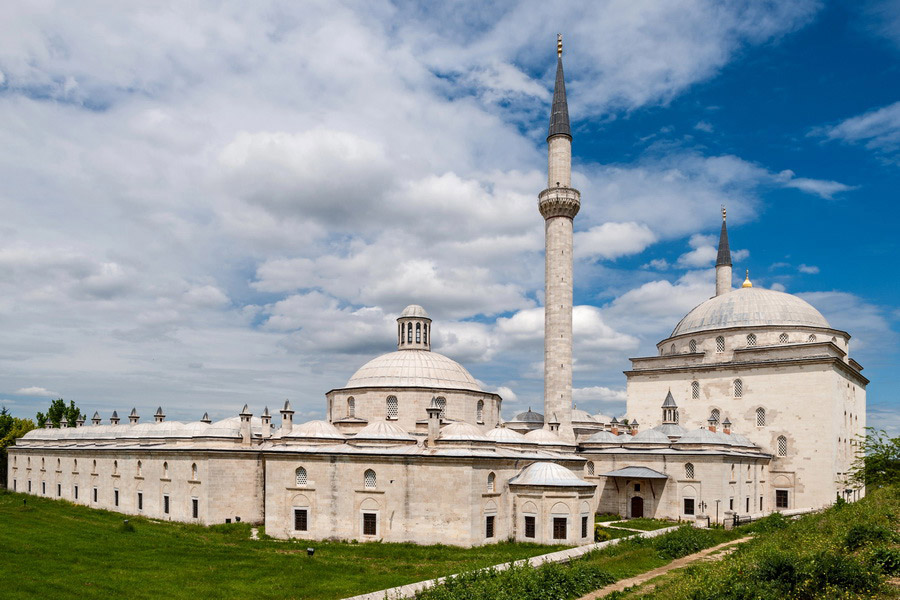
Ottoman Empire Period (1299-1922)
- The Complex of Sultan Bayezid II (Sultan II Bayezid Külliyesi) in Edirne, an Ottoman-era marvel, adopted the "Holistic Medicine" approach with its interconnected hospital, medical school, mosque, and social facilities. Built between 1484 and1488, by Ottoman chief architect Mimar Hayruddin under Sultan Bayezid II's reign, this complex introduced groundbreaking medical practices like music and water therapy, emphasising the harmony of body and soul. Its Darüşşifa (hospital) served as a model for modern healthcare, combining central planning, acoustics, and patient-centred design.
- At İznik Vakfı Atölyeleri, adventurers will witness traditional techniques preserved over centuries. Plates, tiles, and cups, primarily in classic blue and white, are crafted locally by skilled artisans. These pieces connect modern admirers to the rich artistic heredity of the region.
- Edirne City Museum (Edirne Müzesi) vividly portrays the lives of key figures in Osmanlı Devleti and contemporary Edirne. Embark on a self-guided tour or join expert guides for deeper insight into the dynamic bygone times.
- İbrahim Müteferrika Paper Museum is located in Yalova, honouring İbrahim Müteferrika, a key figure in imperial Turkey printing and papermaking. It showcases the annals of paper production and its pivotal role in cultural development. Interactive workshops let sightseers craft their own paper.
- Bursa Quran and Manuscripts Museum (Muradiye Kuran ve El Yazmaları Müzesi) celebrates Turkey’s history, displaying centuries-old Qurans and manuscripts. Tourists might trace the journey of the Holy Book, discovering how it was preserved and revered. It showcases Osmanlı calligraphy, miniature art, and artefacts tied to Bursa’s sultans, making it a unique treasure trove.
Contemporary Period (1923–Present)
- Merinos Textile Industry Museum (Merinos Tekstil Sanayi Müzesi) documents Bursa’s prominent role in Turkey’s textile industry. Housed in a historic factory, it exhibits vintage machinery, weaving tools, and rare fabric samples. Voyagers also get to scrutinise the evolution of textile production techniques, from the Republic era to the present day.
- The Tofaş Anatolian Automobile Museum (Tofaş Bursa Anadolu Arabaları Müzesi) in Bursa represents a unique collection of Turkish carriages and Tofaş-manufactured cars. Opened in 2002 and located in a restored 17,000 m² silk factory in the Umurbey neighbourhood, it's a private establishment, initiated by Tofaş and leased from the Bursa Metropolitan Municipality.
- Vodafone Park is a multifunctional cultural place accommodating concerts, fashion shows, international events, and above all, matches for the Beşiktaş sports club. The Beşiktaş Museum (Beşiktaş JK Müzesi) houses sports memorabilia, including trophies, photos, and jerseys that narrate the glorious days of the club. Interactive screens enhance the visitor experience.
Miscellaneous
Bursa's Karagöz Museum (Bursa Karagöz Müzesi), Turkey's only and exclusive rendezvous dedicated to the traditional Karagöz Shadow Play, opened in 2007. Set in a former power distribution building in Osmangazi, the museum features two main galleries: one detailing the history of shadow play and the other displaying 61 original Karagöz puppets, along with works from prominent puppeteers like Hayali Küçük Ali. It includes a workshop for children to create Karagöz depictions, a specialised library, and a performance hall for live shadow play shows. The Karagöz Museum continues to preserve and promote this unique cultural heritage, which was recognised by UNESCO in 2009.
Best Museums in Thrace
The archaeological site of Troy, in Hisarlık, Turkey, traces 4,000 years. First excavated by Heinrich Schliemann in 1870, it showcases vital evidence of early Anatolian and Mediterranean civilisations. Tales of Troy, including its famous siege by Greek warriors, were immortalised in Homer’s Iliad. The area contains remains of defensive walls, gates, and monumental structures from the Early Bronze Age city, as well as Greek and Roman ruins, including the Temple of Athena and public buildings like an odeion and bouleuterion. It is recognised for its significant role in European cultural development, its influence on literature, and as a symbol of ancient connections between the Aegean, Anatolia, and the Balkans.
Must-visit Museums in the Aegean Region
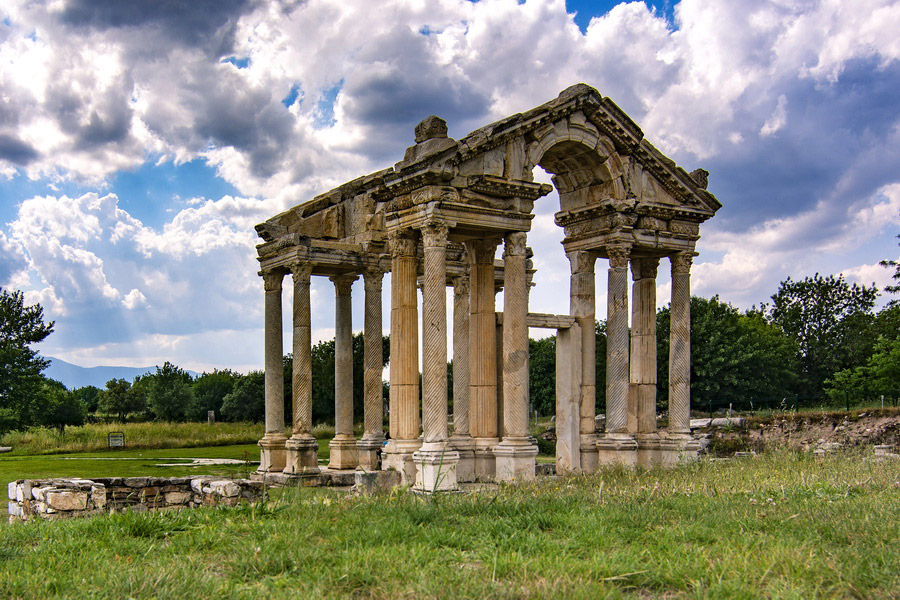
- Izmir Archeology Museum (İzmir Arkeoloji Müzesi) exhibits an impressive collection of antiquities, including statues of Poseidon and Demeter that once adorned the Agora. Next to it, the Ethnography Museum (Etnografya Müzesi) presents folkloric crafts such as Bergama and Gordes carpets, camel bridles, and traditional costumes. Housing relics unearthed from the late mediaeval city of Ephesus Museum (Efes Müzesi) catches the eye with a remarkable collection of statues, coins, and daily-use artefacts from one of Turkey’s most momentous archeological sites. Nearby, you will find the House of Virgin Mary and Basilica of St. John.
- Situated in Geyre village in Aydın, Aphrodisias is an extraordinary archaeological zone with marble quarries and structures dedicated to Aphrodite, the goddess of love. Highlights the well-preserved stadium, Odeion, and Sebasteion, which harbours sculptures displayed in the Sevgi-Gönül Gallery. Dating back to the 3rd century BCE, it was once a major cultural and religious nerve.
- The archaic Smyrna Agora in modern-day Izmir reminds you of the Hellenistic, Roman, and Sublime Porte periods. Known for its marble porticos, monuments, and inscriptions, it also covers Kadifekale, a hilltop acropolis. Smyrna’s connection to the Seven Churches of Revelation further elevates its historical and spiritual importance.
- Housed in the mediaeval Bodrum Castle, the Museum of Underwater Archeology (Bodrum Sualtı Arkeoloji Müzesi) keeps artefacts recovered from shipwrecks dating back to the Bronze Age. Travellers are capable of exploring exhibits like the Uluburun shipwreck, amphoras, and glass objects.
- Once the capital of the Hellenistic Attalid dynasty, Pergamon (Bergama) is renowned for its steep theatre, the Library of Pergamon (Bergama Kütüphanesi), and the healing centre of Asclepieion (Asklepion). Added to the UNESCO World Heritage List in 2014, it underscores the monumental Red Hall, a sanctuary dedicated to Egyptian deities.
- Overlooking the Xanthos Valley in Muğla, Tlos is a Lycian point with rock-cut tombs, a medieval castle, a stadium, and two well-preserved baths. Visitors are enabled to browse the remains of the Kronos Temple and the Christian Basilica. The nearby Saklıkent Gorge enhances the experience with its stunning natural beauty.
- Known as the cradle of rational thought, geometry, and city planning, Miletus (Milet) in Aydın was home to great philosophers like Thales and Anaximander. Its well-preserved theatre, Baths of Faustina, and colonnaded walkways highlight its architectural significance.
For travellers keen on exploring Turkey and its legacy, many of these sites are included in the MuseumPass Türkiye E-Card program, providing easy access to the country’s top museums and archeology scenes. Make sure to download the Museums of Turkey App to reinforce your tours.
Must-visit Museums and Historical Sites in the Mediterranean Region
Antalya
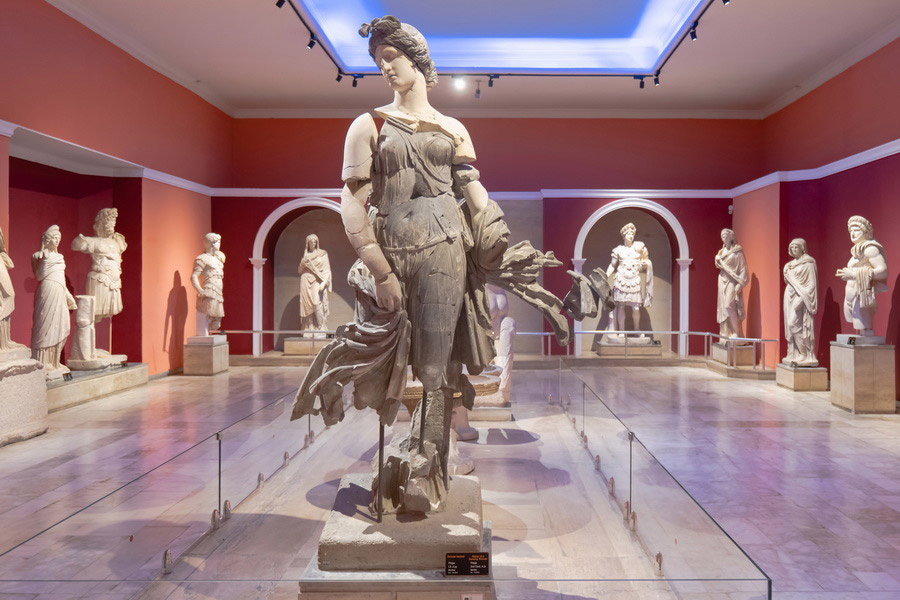
- One of Turkey’s largest, the Antalya Archeology Museum (Antalya Arkeoloji Müzesi) is located in the Muratpaşa district; its halls take care of Roman sculptures, mosaics, and regional relics from prehistoric to Byzantine eras. The open-air gallery complements the indoor exhibits, while the Children’s Museum provides an interactive experience for young incomers.
- Perge Archaeological Site (Perge Örenyeri) (Antalya) is situated 17 kilometres east of Antalya. Notable structures embody the stadium, Roman baths, and a monumental gate bordered by two towers. Excavations that began in 1946 have uncovered significant products, many of which are now displayed in the Antalya Museum (Antalya Müzesi).
- Located in the restored 2nd-century AD Agora Bath, the Side Museum (Side Müzesi) lodges artefacts unearthed during local excavations. The collection encloses statues, sarcophagi, inscriptions, and coins from the Hellenistic, Roman, and Byzantine periods. The museum’s setting, with views of the ruins and the Mediterranean Sea, enhances its appeal.
- Perched high in the Taurus Mountains, Termessos is a remote Pisidian settlement with massive natural scenery. Excursionists can explore its well-preserved theatre, agora, and necropolis.
- Nestled between the sea and mountains, the Lycian town of Phaselis (Faselis) marks the ruins of aqueducts, streets, and a theatre. Celebrated for its three natural harbours, Phaselis was an important Lycian port city.
- The ancient city of Myra (Mira antik kent) is known for its Lycian rock tombs and Roman theatre. Nearby, the St. Nicholas Church (Demre Aziz Nikolaos Kilisesi), a key pilgrimage site, commemorates the life of Saint Nicholas, the 4th-century bishop who inspired the legend of Santa Claus.
- Simena (Kaleköy) is a small Lycian settlement with sweeping views of the Mediterranean, partially submerged ruins, and rock-cut tombs. Accessible only by boat or on foot, Simena is one of the top historical sites on the sun-kissed Mediterranean.
- The Antalya Sand Sculpture Museum (Antalya Kum Heykeli Müzesi) brings to light large-scale sculptures created by international artists using only sand and water. Held annually since 2006, this open-air exhibition features intricate works depicting historical figures, mythological themes, and landmarks.
Denizli
- Laodicea (Laodikeia), an important municipality in the Lycian region, is known for its extensive ruins, including temples, theatres, and a stadium. It was also one of the Seven Churches of Revelation, making it a station of religious and historical significance.
Alanya
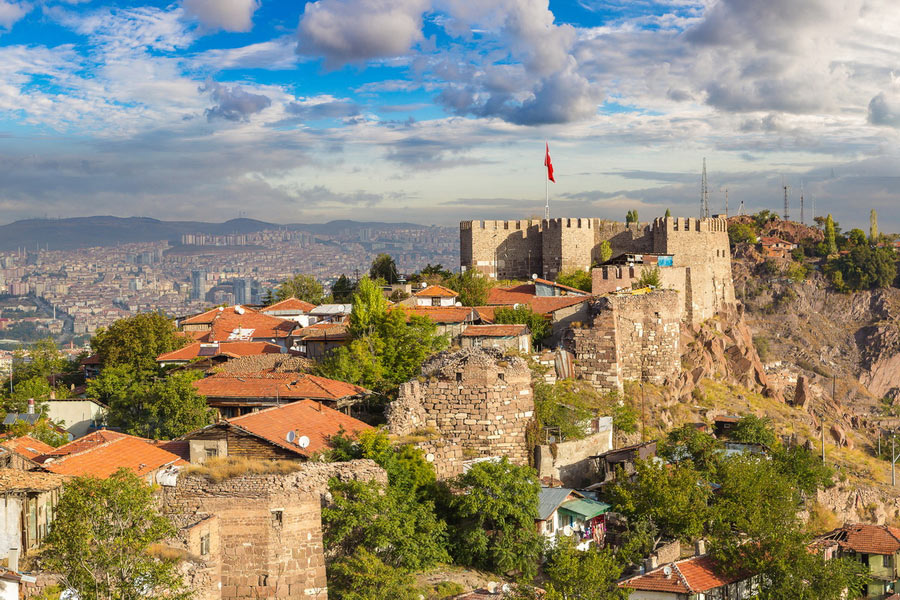
- Constructed in 1226, Red Tower (Kızıl Kule, Alanya) is an octagonal Seljuk tower positioned as a symbol of Alanya. Built to protect the adjacent shipyard, it now houses the Alanya Ethnography Museum (Alanya Etnografya Müzesi). Wayfarers can climb to the top for panoramic views of the harbour.
These sites are an integral part of the MuseumPass Türkiye E-Card, which provides access to many attractions across the region. Holiday-makers can also download the Museums of Turkey App for detailed guides and information on their journey through Turkey’s Mediterranean cultural property.
Must-visit Museums in the Central Anatolia Region
Top Museums in Ankara
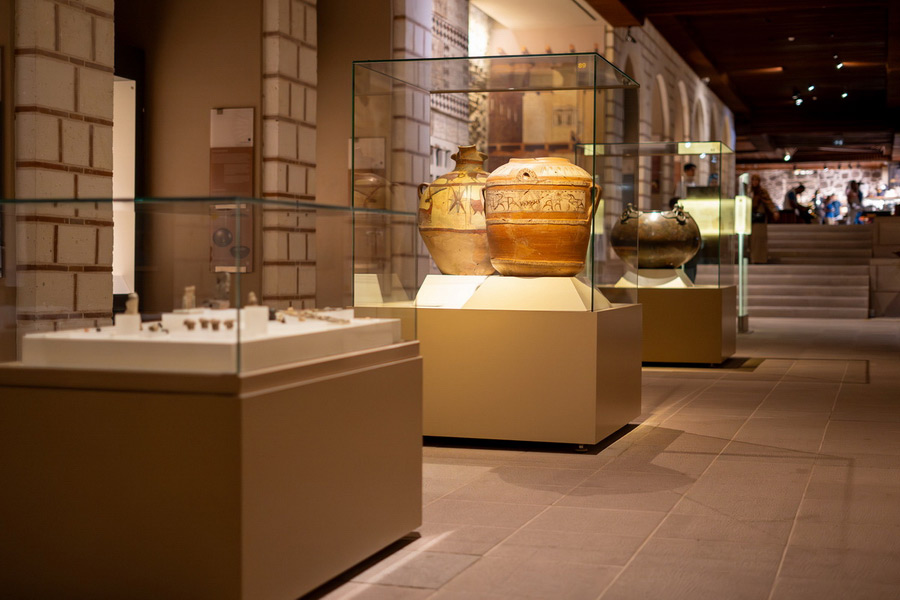
Stationed in restored Ottoman buildings (Mahmutpaşa Bedesten and Kurşunlu Han) near Ankara Castle, the Museum of Anatolian Civilisations flaunts Anatolian history from the Palaeolithic Age to the Classical Age. Its unique collections include items from the Hittite Empire, Phrygian Kingdom, and Urartu Kingdom, earning it the title of "Museum of the Year in Europe" in 1997. Established in 1921 under the vision of Mustafa Kemal Atatürk, it is devoted to a historical journey through chronologically arranged exhibits.
Initially constructed as a museum and temporary mausoleum for Atatürk (1938-1953), the Ethnography Museum of Ankara (Ankara Etnografya Müzesi) opened to the public in 1956. It keeps nine permanent galleries, putting lights on Seljuk, Ottoman, and Republican-era artefacts. Highlights labyrinthine wooden works, calligraphy, military items, tile art, rugs, and clothing.
A private center dedicated to the earlier times of transportation, industry, and communication, Çengelhan Rahmi M. Koç Museum (Çengelhan Rahmi M. Koç Müzesi) in Ankara emphasizes items from the private collection of Rahmi Koç. It lets in exhibits on road, rail, marine, and air transport, as well as scientific instruments and mechanical models.
Top Museums in Cappadocia
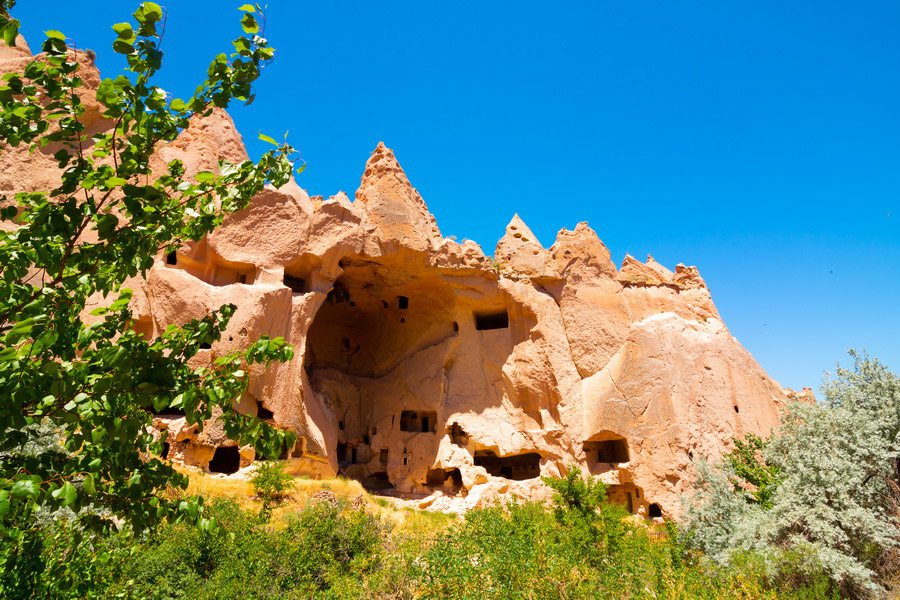
Located 5 km from Avanos, Zelve Open-Air Museum (Zelve Açık Hava Müzesi) is a Byzantine-era cave settlement bringing forward fifteen churches and fairy chimneys. Once a Turkish village until 1960, it is now an open-air museum following Cappadocia’s historical landscape. Nearby attractions: the Paşabağı Open-Air Museum (Paşabağı Açık Hava Müzesi).
A UNESCO World Heritage site, Göreme Open-Air Museum (Göreme Açık Hava Müzesi) is dotted with monastic structures carved into fairy chimneys, created under the guidance of St. Basil. Key sites are the Elmalı Church, St. Basil’s Chapel, and the Dark Church, known for their well-preserved frescoes.
Nevşehir Museum (Nevşehir Müzesi) in the town center has two sections: archaeology and ethnography. Exhibits embrace artefacts from the Neolithic to Byzantine eras, along with regional ethnographic items like handwritten books, ornaments, and kitchen tools.
Miscellaneous
Yılmaz Büyükerşen Wax Museum (Yılmaz Büyükerşen Balmumu Heykeller Müzesi) (Eskişehir) was opened in 2013 by Yılmaz Büyükerşen, and brings forward 198 wax sculptures across five halls. Themes involve Atatürk’s life, sultans, Turkish actors, and historical figures. It additionally proceeds to support the education of female and disabled students.
Established in 1901 and revamped in 1962, Konya Archeology Museum (Konya Arkeoloji Müzesi) is one of Turkey’s oldest museums. It brings up-to-date antiquity from the Neolithic Age to the Byzantine period, including significant items from the Hellenistic and Roman eras.
Housed in a restored Ottoman-era school building, Sivas Archeology Museum (Sivas Arkeoloji Müzesi) opened in 2009 and carries a collection of memorabilia from Neolithic, Bronze, Hellenistic, and Byzantine periods. The building’s restoration was completed in 2007 by the Sivas Provincial Administration.
Must-visit Museums in Eastern and Southeastern Anatolia Region
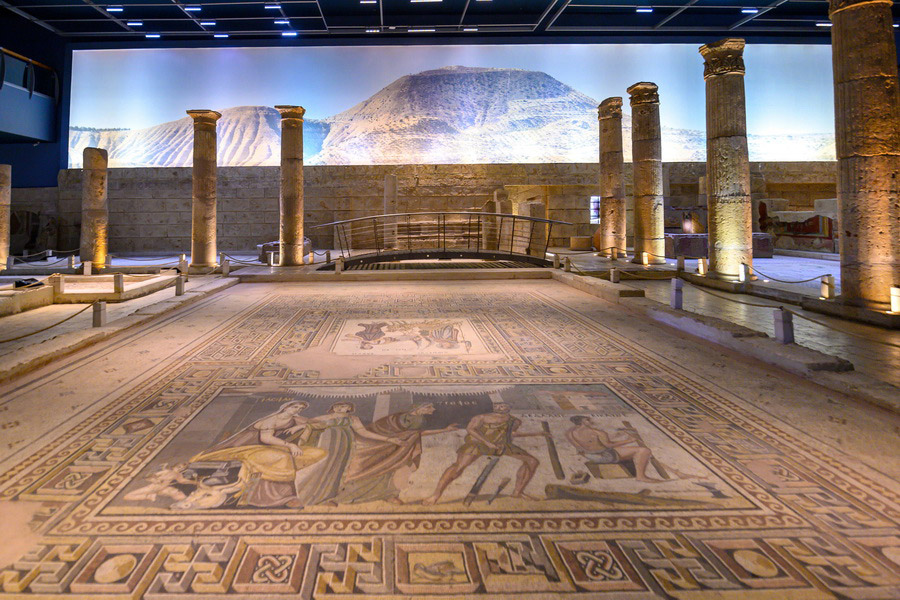
Situated in one of the world’s oldest cities, Van Museum (Van Müzesi) glass cases relics from the Palaeolithic Period to the Ottoman Empire, accentuating Van’s role as a Silk Road heart and the Urartian capital. Established in 1945, this tourist destination hosts an extensive collection in its modern 10,000 m² complex, featuring chronological exhibits, a library, a conference hall, and spaces for children and temporary exhibitions.
Erzurum Archaeology Museum (Erzurum Arkeoloji Müzesi), in Eastern Anatolia, Erzurum, originally established in 1942, allocates antiques from the 4th millennium BC to the Seljuk era. Featuring finds from venerable settlements such as Karaz and Pulur, the museum provides an insightful journey into the region’s olden days. Located in a modern building, it is open daily with a modest entrance fee.
Zeugma Mosaic Museum (Zeugma Mozaik Müzesi) (Gaziantep), the world’s largest mosaic museum, protects 1,700 m² of mosaics from the Hellenistic and Roman periods. Focused on the ancient city of Zeugma, with the collection incorporating stunning pieces saved from flooding in 2000, it survived the 2023 earthquake and reopened as a symbol of resilience.
The Mevlana Museum (Mevlânâ Müzesi) (Konya), home to the tomb of 13th-century philosopher and mystic Mevlana Rumi, is Konya’s most famous landmark. The complex holds his mausoleum, a dervish lodge, and a collection of artefacts related to the Mevlevi Order. Holidaymakers can look into the tranquil gardens, historical exhibits, and summer whirling dervish performances.
Göbekli Tepe, the world’s oldest known temple and a UNESCO World Heritage Site, is another crucial site in the Southern Anatolian region. Dating back to 9600 BC, this site features towering stone pillars with intricate carvings, shedding light on early communal life and craftsmanship. Nestled near Şanlıurfa, Göbekli Tepe yields visitors a chance to discover humanity’s earliest architectural and cultural achievements in a stunning hilltop setting.
Must-visit Museums in the Black Sea Region
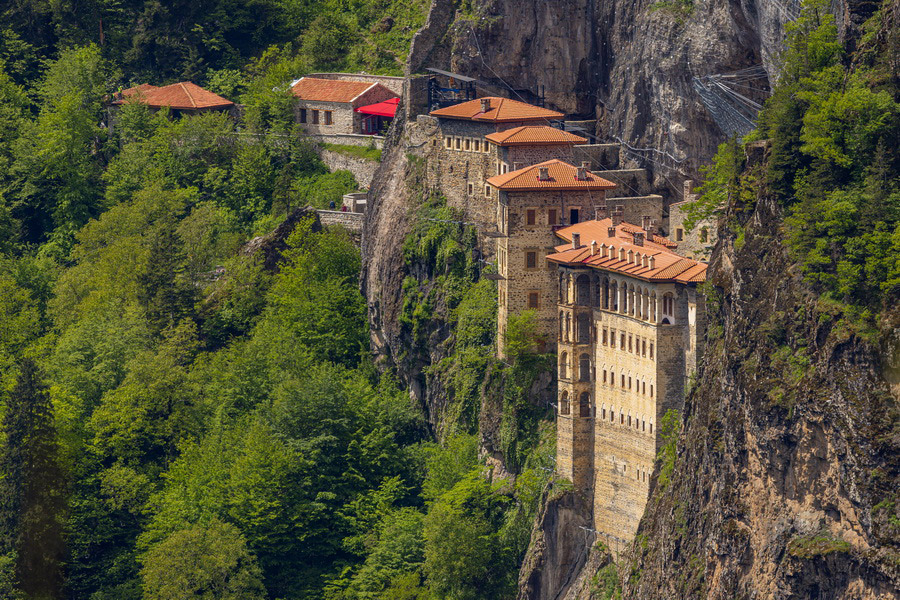
The Black Sea region of Turkey invites you to explore its track record and diverse roots through a selection of remarkable heritage settings. Whether you're exploring with a MuseumPass Türkiye E-Card or planning museum tours in Turkey, these destinations should top your list.
Housed in the historic Kostaki Mansion, Trabzon City Museum (Trabzon Müzesi) unfolds the layers of the city’s inheritance through its archaeological and ethnographic exhibitions. The mansion itself is a tombstone of early 20th-century architecture. Nearby, the staggering Sumela Monastery (Sümela Manastırı), carved into a steep cliff, amazes tourists with its 18th-century biblical frescoes and a deep Orthodox history stretching over 1,600 years.
Samsun Archaeology and Ethnography Museum (Samsun Arkeoloji ve Etnografya Müzesi) features items from the ancient town of Amisos, including exquisite gold jewellery from the Hellenistic period. It also displays historical objects from the Chalcolithic to Roman eras, making it a key destination for Turkey's archeological museum.
Located in the charming 19th-century "Yellow House," Rize Museum (Rize Müzesi) gives prominence to local architectural customs and ethnographic vestiges. Its preserved living spaces and displays form a clear picture of daily life in the region’s past.
Bolu Museum (Bolu Müzesi) pays honour to the prospering collection of Roman statues, marble sarcophagi, and coins from Greek, Byzantine, and Islamic cultures. The garden additionally calls attention to architectural relics of the past empires.
Quartered in a striking Ottoman-era stone building, Kastamonu Museum (Kastamonu Müzesi) captures the early days of the Republic and the region. Its exhibits range from Palaeolithic tools to the odds and ends of the Ottoman Realm.
The Zonguldak Mining Museum (Zonguldak Maden Müzesi) sets the stage for the industrial background of the region, chronicling the story of coal mining through objets d’art, interactive expositions, and fossils that connect natural history with human labour.
Whether you're exploring Turkey's museums through the App on the App Store or looking for inspiration beyond the best museums in Istanbul or Ankara, the Black Sea region introduces a unique and unforgettable journey into Turkey’s historic legacy.

